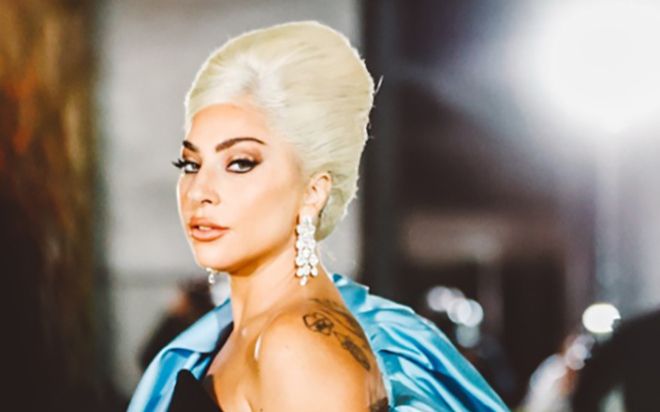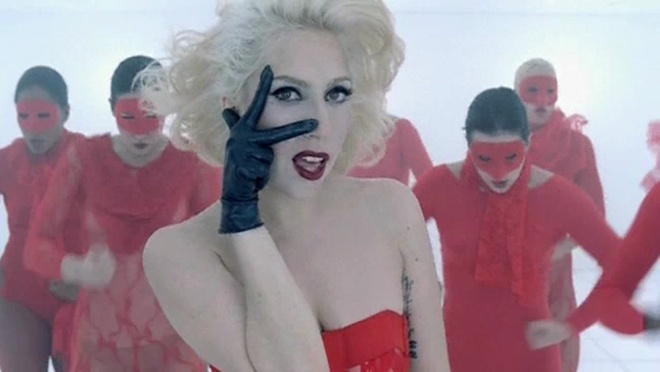In 2009, Lady Gaga released Bad Romance, a song that not only dominated the charts but also cemented her place as an icon who could redefine both music and fashion. While the song itself was a bold and experimental blend of electro-pop and dance beats, it was the accompanying music video that truly left a lasting mark on pop culture. With its surreal aesthetic, avant-garde couture, and deeply conceptual storytelling, Bad Romance blurred the lines between music, fashion, and fantasy in a way that few artists had dared before.
Here's ads banner inside a post

At the heart of this cultural moment was Lady Gaga’s uncanny ability to merge music with art in all its forms, creating a spectacle that went far beyond the confines of the traditional music video. In many ways, Bad Romance was a declaration of what pop could be—a reflection of the modern world’s obsession with excess, the human need for reinvention, and a deep desire to challenge norms.
The Music Video: A Surreal Fashion Fantasy
The Bad Romance video was a visual feast that instantly captured the attention of audiences worldwide. Directed by the visionary photographer and director Francis Lawrence, the video was a collision of dark fantasy and high fashion, pulling from various artistic influences that ranged from Kubrickian surrealism to haute couture runway shows. In many ways, the video transformed into a moving art installation where each shot was meticulously crafted to shock, provoke, and mesmerize.
Here's ads banner inside a post
One of the most striking elements of the Bad Romance video was the fashion. From the very first frame, Gaga emerged in an otherworldly array of outfits that blended the bizarre with the beautiful. The standout piece, perhaps, was the Alexander McQueen armadillo boots. These towering, curved shoes—which became an iconic symbol of the video—represented a clear fusion of fashion and fantasy. McQueen’s designs were always known for their sculptural qualities, but Gaga’s embrace of the boots, along with the exaggerated silhouettes, created a fantasy realm in which the boundaries of reality were suspended.
Alongside McQueen, other high-end designers like Balenciaga and Giorgio Armani outfitted the singer in ensembles that were just as bold and experimental. In this music video, fashion became more than just clothing; it was an integral part of the narrative. The stylized, almost futuristic outfits told a story of power, control, and alienation, mirroring the darker undertones of the song’s lyrics.
A Rebel in the Mainstream
Lady Gaga’s persona in 2009 was that of a mainstream rebel, a figure who both embraced and rejected the expectations of the pop world. Her music and image played with themes of sexuality, identity, and fame in ways that were often provocative but always thought-provoking. In a time when pop music was dominated by polished, predictable stars, Gaga’s raw energy and conceptual approach to pop was revolutionary.
Here's ads banner inside a post
Bad Romance exemplified her ability to defy the norms of mainstream pop while simultaneously owning the very space she was breaking into. The video felt like a dissection of the glamour and superficiality of fame, all wrapped up in couture and artifice. In this way, Gaga set the stage for a new wave of artists who would begin to embrace their eccentricities as badges of honor rather than things to hide.

Moreover, the song itself was an exploration of the complexities of love and power, capturing both the vulnerability and the strength that can come with relationships. The juxtaposition between the song’s electro-infused dance beats and its more introspective, almost tragic lyrics mirrored the clash of high fashion with the gritty, real-world emotions Gaga was portraying.
The Influence of the Digital Age and “Little Monsters”
At the same time, Bad Romance was one of the first music videos to capitalize on the emerging power of the digital fandom. Gaga’s digital fanbase, famously known as the “Little Monsters,” became a major force in her rise to stardom. These fans were not just passive consumers of her music; they were active participants in creating her mythos.
In the age of social media, Gaga’s relationship with her fans was incredibly symbiotic. She didn’t just perform for them—she invited them into her world. Through Twitter, YouTube, and other online platforms, she built a community that was eager to interpret and discuss the deeper meanings behind her videos, her music, and her fashion choices. The Bad Romance video wasn’t just a song launch—it was a conversation starter, sparking debates and fan theories that would define her career.

For the Little Monsters, Bad Romance became a rallying cry for embracing individuality, pushing back against societal norms, and celebrating self-expression. It was a perfect encapsulation of the digital age’s ability to amplify subcultures and create a sense of belonging through shared fandom.
The Legacy of Bad Romance
Over a decade after its release, Bad Romance continues to hold cultural weight. The song and its video remain a touchstone for both music and fashion. The video’s influence can be seen in the work of contemporary artists like Dua Lipa, Billie Eilish, and even visual artists who have drawn inspiration from Gaga’s bold use of surrealism and couture.
Fashion houses that collaborated with Lady Gaga in the Bad Romance video, like Alexander McQueen, continue to shape the fashion world, with many citing the video as a key moment in modern fashion history. The blurring of the lines between music video and fashion runway has since been embraced by other artists, making Gaga’s vision of performance art something that has reverberated throughout both industries.
Perhaps the most significant legacy of Bad Romance is its celebration of the fusion of music, fashion, and fantasy. Lady Gaga taught the world that pop music could be more than just a catchy tune—it could be an immersive experience, a creative rebellion, and an artistic statement. In this sense, Bad Romance wasn’t just a music video. It was a cultural moment that reshaped the very fabric of entertainment, fashion, and fandom, making Lady Gaga not just a pop star, but a groundbreaking cultural icon.
Lady Gaga’s Bad Romance remains a defining moment in the intersection of music, fashion, and fantasy. Through avant-garde fashion choices, a hauntingly captivating narrative, and her distinct personal style, Gaga transformed pop music videos into something much more than visual accompaniments to songs. She created art that was as much about self-expression as it was about pushing boundaries, making Bad Romance an unforgettable piece of pop culture that still resonates with audiences today.

